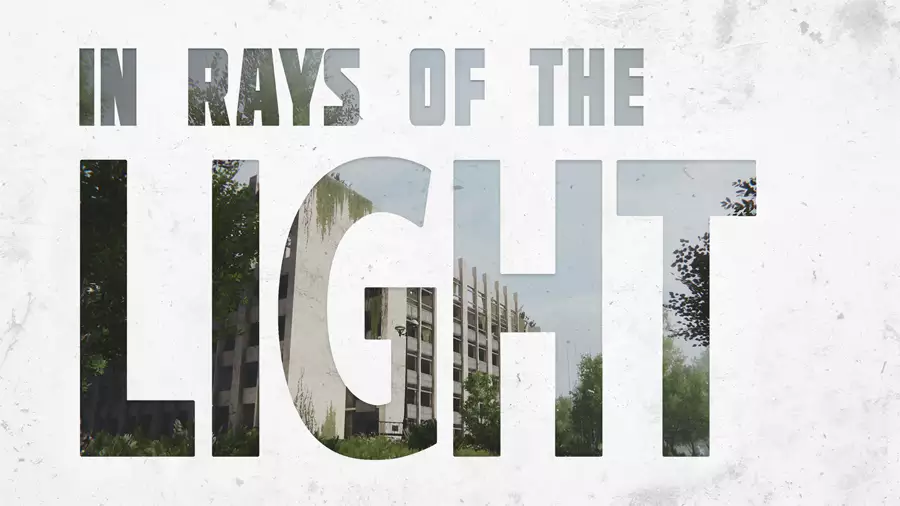In Rays of the Light: Review

Russian developer Noskov Sergey (re)presents In Rays of the Light, the title of our PS5 console review. It is a remake of The Light, a game released in 2012 only on steam platform. Console porting is entrusted to the wise hands of Sometimes You who by trade does this too. The next-gen Sony puts its own, amplifying the effects of lighting and environmental occlusion. Not to be confused, these, with ray tracing, that it is quite another matter.
The dev, as in the original version, relies on Unity. The engine behaves well, without showing any significant drop in frames, typical of when it is squeezed to the maximum. Throughout our gaming experience, everything is oil-smooth yarn, an indication of a rare technical mastery when it comes to video games. On the other hand, already on 35MM and 7th Sector the good Sergey had demonstrated his technical and creative skills. Two games, which, although different in genre, have stood out for originality.
In Rays of the Light it looks like an FPP, which stands for first-person perspective. We, who are patriotic and also a little old style, prefer to call it a narrative graphic adventure in subjective. You’re right, English slang is “cooler”, but many times it says everything and nothing. The suspense element is the setting for the general gaming experience, which feeds on the notes of complete desolation and absence of any form of life.
You will live anchored to memories of a past, told by words, images and sounds. Honorable mention for this last aspect, entrusted to the creative genius of the composer Dmitry Nikolaev, old acquaintance for those who played at 35mm. There are moments of play, when the musical sequence begins, that stops to contemplate the moment. And by moments, in our PS5 console review of In Rays of the Light, there were plenty of them.
In Rays of the Light it begins with a show of strength, the one inserted in the previous video. In this timelapse the Russian developer makes everyone understand that Unity can compete with its rival Unreal. Nothing could be easier by showing it on video. When, then, you try with pads in hand, the gameplay hardly lies. Wanting to do the “faciloni”, the game can be divided into two distinct moments of play: inside and outside the building.
Much of the experience takes place within a structure reminiscent of communist classicism of the former Soviet republics. White, with rigid canons of precision and perfection. What you see from the outside, however, goes in stark contrast to what you find, then, inside. General disorder, with walls consumed by time, with photos and writing on them that serve as tips to get on with the story and solve puzzles.
This last element represents the “biting” of the game. It’s that thing that pushes you to continue to figure out where the whole thing wants to go. There are always two endings to discover, so it’s easy to replay twice. The (semi)sore note is represented by the absence of an Italian localization of the game. Translations are of little use since there are no demanding dialogues and texts. You will find, yes, letters and manuscripts in English but these are sentences written at a school level and rather accessible.
Being a first-person graphic adventure, it’s easy to fall into the obsessive compulsive “tip and click” effect. The wide spaces a little avoid it, pushing the player towards light and exploration. In fact you are almost invited to leave the building, even if you have the constant feeling that you have forgotten something. And that’s the way it is on time. The trick is to never leave anything to chance and use the available inventory. The recursive structure of the game always makes you go back to the usual points and does so for a reason. Why it’s the basis of the game.
It is a story of a person, lived “from within” that same person. A simple phrase that can enclose the gist of the gameplay of In Rays of the Light. As we said at the beginning of our review, the whole thing can be categorized in the FPP genre, where the perspective element is fundamental. It’s like good Sergey wants us to say, “Okay guys, this is my story told from my point of view.”
Among the editable parameters, in the essential menu of options, we find the speed of the camera. Through a selector, the sensitivity varies depending on your preferences. Changing this parameter, however, changes your overall gaming experience a lot. As we told you before, this is “reasoned” gameplay. Haste or responsiveness makes it look like an FPS, what it is not and does not want to be.
Each room has a story to tell and can hide secrets and mysteries to unravel. Particular attention should be paid to handwritten messages, words painted on the walls and the various documents that you find as the plot wears out. In Rays of the Light it hides many puzzles to solve, some blockers and others that give you the illusion of futility. Remember that there are two endings, so it’s up to you to make choices.
Choices that reflect the way you play, but many also depend on what happens before your eyes. The point of view is always that, it is the choice to go to one side rather than the other is always and only yours. In this respect, we can remain diseasled. Usually a video game creates obligatory paths for you to follow, which take you from point A to point B. The Russian developer does not trace any path, choosing for you only point A. The B is up to you.




